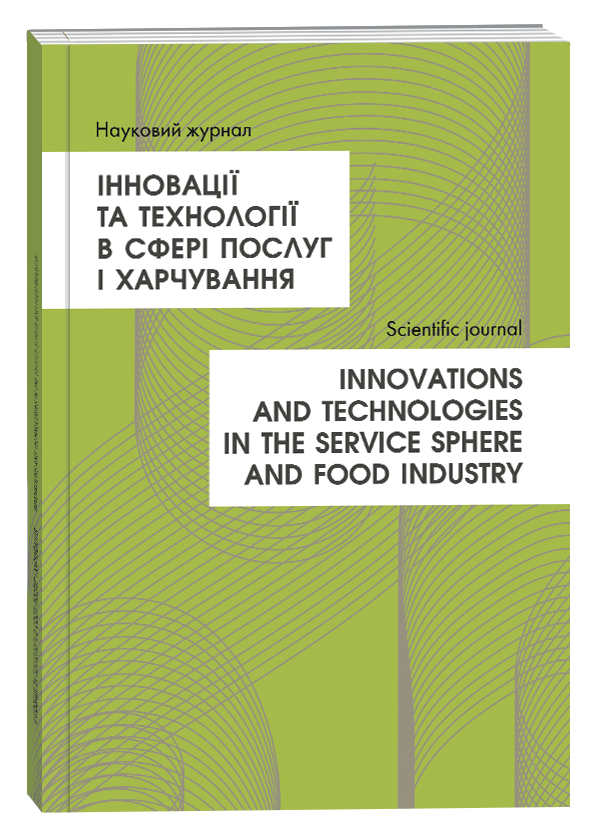RESVERATROL AS A PROMISINQ ANTIOXIDANT IN MEAT AND DAIRY PRODUCTS
Abstract
The article presents an analysis of scientific sources on the oxidative processes of fat-containing products and the use of antioxidants in the meat and dairy industry. Antioxidants are a vital group of food additives with unique properties to extend the shelf life of food products while maintaining their taste and nutritional value. In terms of classification, there are two main types of antioxidants: primary and secondary. The primary antioxidants include phenols and phenolic compounds, which act as hydrogen atom donors and are capable of breaking the radical reaction chain. Secondary antioxidants, such as ascorbic acid, act as hydrogen atom donors to phenoxyl radicals, thereby contributing to the regeneration of primary antioxidants. Their action reduces the amount of phenolic compounds, increasing the acidity of the environment and thus the stability of primary antioxidants. The influence of ascorbic acid and tocopherol on fat-containing products for the purpose of stabilization is considered. The use of dried grape pomace as a source of resveratrol is proposed. Resveratrol is a natural steroid metabolite synthesized in grape leaves. It is a plant antibiotic, a phytoncide, with antioxidant properties that are 20 times higher than vitamin C and 50 times higher than tocopherol. This addresses the issue of the utilization of waste products generated by the wine industry. The unique properties of resveratrol facilitate the extension of the shelf life of food products without compromising their organoleptic characteristics and nutritional value. The application of the latest technologies in the production of meat and dairy products presents a significant opportunity for the enhancement of product quality and its usefulness to consumers. These technologies are becoming an invaluable tool for enhancing the taste, texture, and properties of products, guaranteeing their safety and prolonged shelf life, and most crucially, meeting the specific demands of consumers. Nevertheless, it is important to maintain a balance between technological advancement and the preservation of products' inherent qualities, as well as to prioritize environmental sustainability.
References
Про схвалення Національної стратегії управління відходами в Україні до 2030 року: Розпорядж. Каб. Міністрів України від 08.11.2017 р. № 820-р: станом на 17 верес. 2020 р. URL: https://zakon.rada.gov.ua/laws/show/820-2017-р.Text
Домарецький В.А., Маринченко В.О., Білько М.В. та ін. Хімія і біохімія вина: підручник; за ред. А. І. Українця; МОН України, Національний університет харчових технологій. Київ : НУХТ, 2007. 261 с.
Majerska J., Michalska A., Figiel A. A review of new directions in managing fruit and vegetable processing byproducts. Trends Food Sci Technol. 2019. No. 88. P. 207–219.
Cádiz-Gurrea M.D.L.L., Borrás-Linares I., Lozano-Sánchez J., Joven J., Fernández-Arroyo S., Segura-Carretero A. (2017) Cocoa and grape seed byproducts as a source of antioxidant and anti- inflammatory proanthocyanidins. Int. J. Mol. Sci. No. 18(2).
Murcia M.A., Martinez-Tome M. Antioxidant activity of resveratrol compared with common food additives. J. Food Protect. 2001. No. 64(3). P. 379–384.
Gordon M., Pokorny J., Yanishlieva N., and Gordon M. (eds.) Antioxidants in Food: Practical Applications. Woodhead Publishing, Ltd., Cambridge, England, 2001. P. 7–21.
Leopoldini M., Russo N., Toscano M. The molecular basis of working mechanism of natural polyphenolic antioxidants. Food Chem. 2011. Vol. 125. Pp. 288–306.
Choi I. S., Min D. Mechanisms of antioxidants in the oxidation of foods. Compreh. Rev Food Sci. Food Saf. 2009. Vol. 8. P. 345–358.
Choi I. S., Cha H. S., Lee Y. S. Physicochemical and antioxidant properties of black garlic. Molecules. 2014. Vol. 19. P. 16811–16823.
Янчева М. О., Пешук Л. В., Дроменко О. Б. Фізико-хімічні та біологічні основи технології мяса та м’ясопродуктів: Навч.пос. Київ : Центр учбової літератури, 2009. 304 с.
Євлаш В.В., Торяник О.І., Коваленко В.О., Аксьонова О.Ф., Отрошко Н.О., Кузнецова Т.О., Павлоцька Л.Ф., Торяник Д.О. Харчова хімія: навчальний посібник. Харків : Світ книг, 2012. 504 с.
Ластухін Ю.О. Харчові добавки. Е-коди. Будова. Одержання. Властивості: навч. посібник. Львів : Центр Європи, 2009. 836 с.
Oksidation in foods and beverages and antioxidant applications (in III volumes). Edited by Decker E.E., McClements D.J. 2010. Woodhead Publ. Oxford. 984 p.
Челябієва В.М., Костюченко А.М., Семенюк О.Ю. Використання природних антиоксидантів у виробництві борошняних кондитерських виробів. Технічні науки та технології. 2016. № 4 (6). C. 211–217.
Brewer M. S. Natural antioxidants: sources, compounds, mechanisms of action, and potential applications. Compreh. Rev. Food Sci. Nutr. 2011. Vol. 10. Р. 221–247.
Madhavi D. I. Food antioxidants: technological, toxicological, and health perspectives food science and technology. 1996. New York: CRC Press. 664 p.



